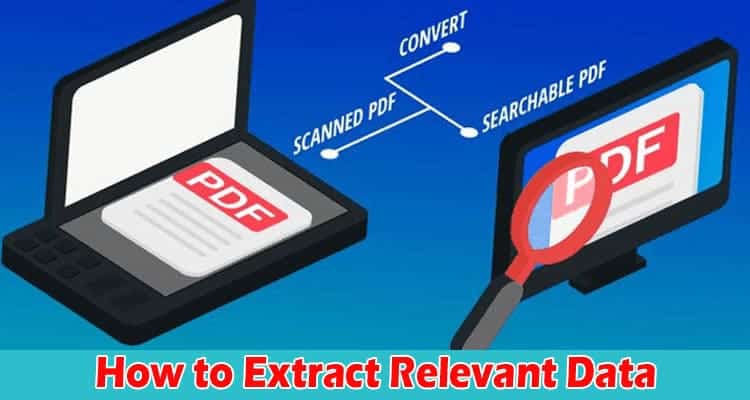In today’s digital age, organizations are faced with the challenge of managing vast amounts of information, much of which is stored in physical documents. Extracting valuable data from scanned documents can be a time-consuming and error-prone task if done manually. However, advancements in technology, particularly Optical Character Recognition (OCR) and Document AI, have revolutionized the process of data extraction. By harnessing the power of OCR and Document AI, organizations can streamline their data extraction workflow, improve accuracy, and increase efficiency.
OCR (Optical Character Recognition)
OCR is a technology that converts various types of documents, such as scanned paper documents, PDF files, or images taken by a digital camera, into editable and searchable data. By using OCR software, organizations can recognize and translate printed or handwritten characters into machine-readable text. This technology forms the foundation for efficient data extraction from scanned documents.
Document AI
Document AI takes OCR to the next level by combining it with machine learning and natural language processing (NLP). This advanced technology can extract structured data from unstructured documents, such as invoices, contracts, or forms. Document AI has the ability to comprehend complex document structures, identify key data points, and accurately categorize them. It is particularly useful for handling diverse document formats, layouts, and languages.
End-to-End Automation
To maximize efficiency in data extraction, organizations can implement end-to-end automation. This involves creating a seamless workflow that integrates OCR and Document AI to extract data from scanned documents automatically. The following step-by-step process outlines how this can be achieved:
Step 1: Document Ingestion (Storing)
Scanned documents are digitally captured and stored in a designated depository. This ensures that all documents are easily accessible and can be processed efficiently.
Step 2: Pre-Processing
Before applying OCR, documents undergo pre-processing to enhance image quality, improve readability, and correct distortions. This step ensures optimal OCR accuracy, leading to more accurate data extraction.
Step 3: OCR Application
OCR software is applied to the pre-processed documents. It identifies and translates text, including handwritten characters, into machine-readable text. The OCR-generated text is the foundation for further data extraction and analysis.
Step 4: Document AI Integration
The OCR-generated text is fed into the Document AI system. The system utilizes machine learning algorithms to comprehend document structure, identify data points, and establish relationships between different pieces of information. This integration enables more accurate and efficient data extraction.
Step 5: Data Extraction and Validation
Document AI extracts relevant data points based on predefined templates and rules. Natural language processing (NLP) algorithms can validate and cross-reference extracted data for accuracy. This ensures that the extracted data is reliable and can be confidently used for further analysis.
Step 6: Data Structuring
The extracted data is structured into a usable format, such as spreadsheets or databases. This allows for easier analysis and integration with other systems and tools. By organizing the data in a structured manner, organizations can make better use of the extracted information.
Step 7: Review and Exception Handling
An automated review process identifies documents with uncertain extractions or errors. These documents are flagged for manual review, improving the system’s accuracy over time. This iterative process ensures continuous improvement and minimizes the risk of errors.
Step 8: Integration with Business Processes
The structured data is seamlessly integrated into relevant business processes, such as customer relationship management (CRM), enterprise resource planning (ERP), or analytics tools. This integration allows organizations to make data-driven decisions and enhance customer experiences.
Advantages
Implementing end-to-end automation for data extraction offers several benefits for organizations:
- Efficiency: Automation reduces manual effort, increasing overall productivity and efficiency. By automating the data extraction process, organizations can save valuable time and resources.
- Accuracy: Integration of OCR and Document AI minimizes errors, ensuring accurate data extraction. Automation eliminates the risk of human error and improves the reliability of the extracted data.
- Time Savings: Automated processes significantly reduce processing time compared to manual extraction. Organizations can extract and process large volumes of data more quickly, allowing for faster decision-making.
- Scalability: The system can handle large volumes of documents without compromising accuracy or speed. As organizations grow and their document-intensive workflows increase, the automated system can seamlessly scale to meet the demand.
- Cost-Effectiveness: Long-term cost savings are achieved by minimizing labor-intensive tasks. By automating data extraction, organizations can reduce the need for manual data entry and allocate resources more efficiently.
Incorporating OCR, Document AI, and end-to-end automation transforms the way organizations handle data extraction from scanned documents. By implementing a streamlined workflow automation that combines these technologies, businesses can extract relevant information quickly, accurately, and efficiently. This not only saves time and resources but also opens up opportunities for data-driven decision-making and enhanced customer experiences. As technology continues to evolve, the potential for even more sophisticated data extraction solutions becomes increasingly exciting.







